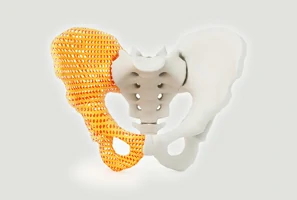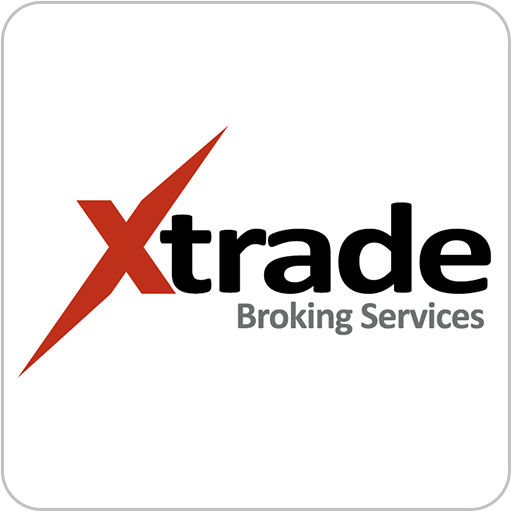The global market is on an upward trajectory, driven by the rising demand for high-quality photographic prints across various industries. As a favored method for creating vibrant, durable prints on textiles, ceramics, and other materials, dye-sublimation is set to see robust growth over the coming years. The Dye-Sublimation Printing Market is expected to expand at a CAGR of approximately 8.90% during the forecast period from 2024 to 2032. This article provides a comprehensive overview of the dye-sublimation printing market, highlighting key benefits, industry developments, driving factors, COVID-19 impact, restraining factors, market segmentation, and more.
Key Benefits of Dye-Sublimation Printing
Dye-sublimation printing offers several advantages that are driving its adoption across various sectors:
- High-Quality Photographic Prints: One of the most significant advantages of dye-sublimation printing is its ability to produce vibrant, high-resolution images. The process involves the transition of solid dye directly into gas without passing through a liquid phase, resulting in smooth, continuous tones and sharp details.
- Durability: The prints created through dye-sublimation are resistant to fading, cracking, and peeling, making them ideal for long-lasting applications such as apparel, signage, and promotional items.
- Versatility: Dye-sublimation printing can be used on a wide range of materials, including fabrics, ceramics, metals, and plastics. This versatility makes it a popular choice for industries such as fashion, home decor, and consumer electronics.
- Eco-Friendly: The process is more environmentally friendly compared to traditional printing methods, as it produces less waste and uses fewer chemicals.
Key Industry Developments
The dye-sublimation printing market has seen several significant developments in recent years:
- Technological Advancements: The introduction of high-speed, wide-format dye-sublimation printers has revolutionized the industry. These printers offer faster print speeds, higher resolutions, and better color accuracy, catering to the growing demand for mass customization in various sectors.
- Expansion in Textile Printing: The fashion and apparel industry has increasingly adopted dye-sublimation printing due to its ability to produce intricate designs with vibrant colors on fabrics. The trend of fast fashion and custom clothing has further fueled this demand.
- Rising Popularity of Home Decor: The home decor market has embraced dye-sublimation printing for producing custom-designed items such as curtains, pillow covers, and wall art. This has opened up new growth opportunities for the market.
Driving Factors
Several factors are driving the growth of the global dye-sublimation printing market:
- Growing Demand for Customization: Consumers are increasingly seeking personalized products, from clothing and accessories to home decor items. Dye-sublimation printing’s ability to deliver high-quality, custom prints is a key factor driving its adoption.
- Rise of E-Commerce: The expansion of e-commerce platforms has made it easier for consumers to order custom-printed products online. This trend has significantly boosted the demand for dye-sublimation printing services.
- Adoption in the Advertising Industry: The advertising and promotional industries are increasingly using dye-sublimation printing for creating eye-catching banners, displays, and promotional items, thanks to the process’s vibrant color output and durability.
COVID-19 Impact
The COVID-19 pandemic had a mixed impact on the dye-sublimation printing market:
- Supply Chain Disruptions: The pandemic led to supply chain disruptions, affecting the availability of raw materials and components necessary for dye-sublimation printing. This caused delays and increased costs for manufacturers.
- Shift in Demand: While some sectors, such as fashion and apparel, experienced a decline in demand during the pandemic, others, like home decor and promotional products, saw an uptick as consumers spent more time at home and businesses sought new ways to reach customers.
- Acceleration of E-Commerce: The pandemic accelerated the shift towards e-commerce, leading to increased demand for custom-printed products, which positively impacted the dye-sublimation printing market.
Restraining Factors
Despite its advantages, the dye-sublimation printing market faces several challenges:
- High Initial Costs: The initial investment required for dye-sublimation printers and related equipment can be high, which may deter small businesses and startups from adopting this technology.
- Limited Material Compatibility: While dye-sublimation printing is versatile, it is not compatible with all materials. The process works best on polyester-based fabrics and coated surfaces, limiting its application in certain industries.
- Competition from Alternative Printing Methods: Other printing technologies, such as direct-to-garment (DTG) and screen printing, continue to compete with dye-sublimation, particularly in markets where cost is a significant factor.
Market Segmentation
The global dye-sublimation printing market can be segmented based on the following criteria:
- By Material:
- By Application:
- By End-User:
Market Outlook
The outlook for the global dye-sublimation printing market is positive, with steady growth expected over the forecast period. The market is anticipated to grow at a CAGR of approximately 8.90% from 2024 to 2032, driven by increasing demand for high-quality, durable prints across various industries.
Market Overview
The dye-sublimation printing market is characterized by its ability to produce superior quality prints that are both durable and vibrant. The process’s eco-friendly nature, combined with its versatility, has made it a popular choice for a wide range of applications, from fashion and home decor to advertising and consumer electronics.
Trends
Several key trends are shaping the dye-sublimation printing market:
- Mass Customization: As consumers increasingly seek personalized products, businesses are leveraging dye-sublimation printing to meet this demand. The trend of mass customization is expected to continue driving market growth.
- Sustainable Printing: With growing environmental concerns, there is a rising demand for eco-friendly printing solutions. Dye-sublimation printing’s low waste and reduced chemical usage make it an attractive option for sustainability-focused businesses.
- Technological Advancements: Continued innovation in dye-sublimation printing technology, such as faster print speeds and improved color accuracy, is expected to enhance the market’s growth prospects.
Industry Segmentation and Regional Analysis
The dye-sublimation printing market is segmented across several regions:
- North America: The North American market is driven by the high demand for custom apparel and promotional products. The presence of key industry players and the growing popularity of e-commerce are also contributing to market growth.
- Europe: Europe is a significant market for dye-sublimation printing, particularly in the fashion and home decor sectors. The region’s focus on sustainability and eco-friendly products is also boosting demand for dye-sublimation printing.
- Asia-Pacific: The Asia-Pacific region is expected to witness the highest growth during the forecast period, driven by the expanding textile industry and the rising demand for consumer electronics. Countries like China, India, and Japan are key contributors to this growth.
- Latin America and Middle East & Africa: These regions are also experiencing growing demand for dye-sublimation printing, particularly in the advertising and promotional sectors.
Major Key Players
The global dye-sublimation printing market is highly competitive, with several key players driving innovation and growth. Major players include:
- Epson America, Inc.
- Mimaki Engineering Co., Ltd.
- Roland DG Corporation
- Sawgrass Technologies, Inc.
- HP Inc.
- Kornit Digital Ltd.
- Mutoh Holdings Co., Ltd.
- Brother International Corporation
- DNP Imagingcomm America Corporation
- Ricoh Company, Ltd.
Opportunities
The dye-sublimation printing market presents several opportunities for growth:
- Expansion into New Markets: As demand for custom products grows, there are opportunities to expand into new markets, particularly in emerging economies.
- Technological Innovation: Companies that invest in developing faster, more efficient, and eco-friendly dye-sublimation printers stand to gain a competitive advantage.
- Collaborations and Partnerships: Collaborations between manufacturers and designers or brands can create new avenues for product innovation and market expansion.
Challenges
The market also faces several challenges:
- High Competition: The market is highly competitive, with numerous players vying for market share. Maintaining a competitive edge requires continuous innovation.
- Material Limitations: The limited compatibility of dye-sublimation printing with non-polyester materials remains a challenge.
- Price Sensitivity: In markets where price is a critical factor, the higher costs associated with dye-sublimation printing can be a barrier.
Restraints
Several factors could restrain the growth of the dye-sublimation printing market:
- High Initial Investment: The cost of purchasing and setting up dye-sublimation printing equipment can be prohibitive for small businesses.
- Competition from Alternative Technologies: Competing technologies, such as DTG and screen printing, continue to pose challenges, particularly in cost-sensitive markets.
Scope
The scope of the dye-sublimation printing market is broad, with applications across various industries, including fashion, home decor, advertising, and consumer electronics.





